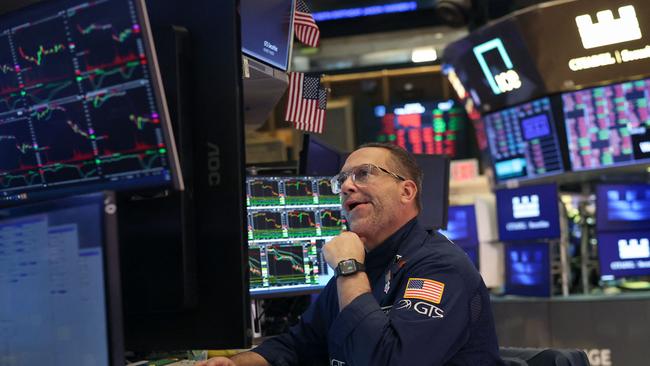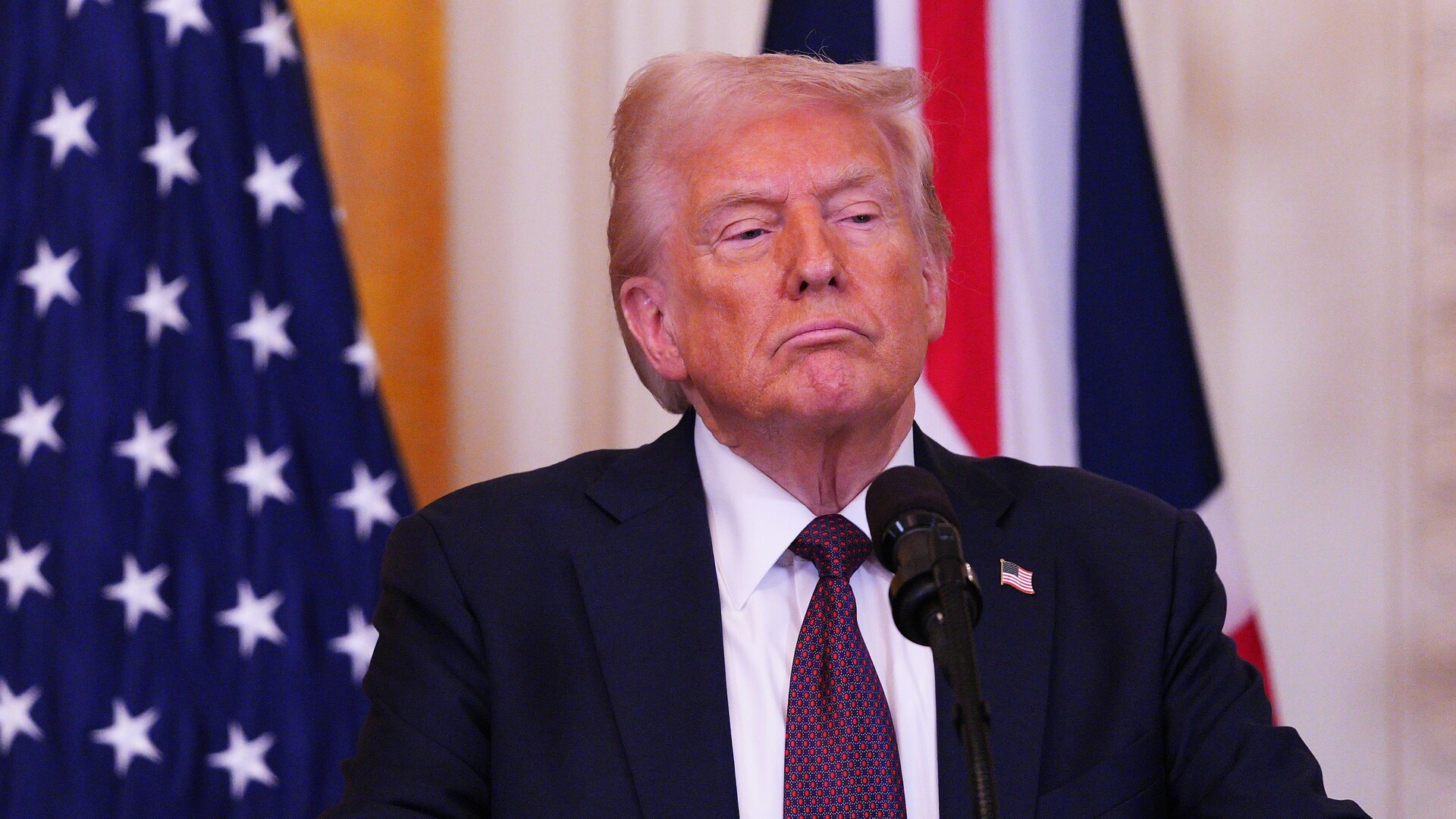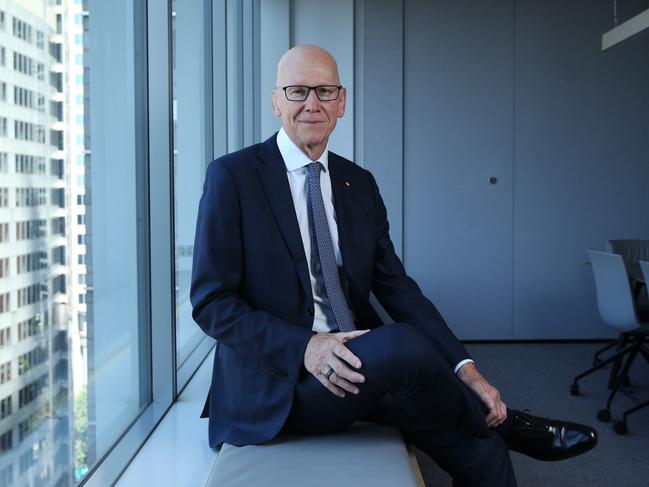
This means investors are rapidly resetting shares, commodities and currencies to hedge against Donald Trump, someone in charge who has an outsized influence on the fate of the global economy and is busy smashing it any sense of structure and certainty.
The extreme moves in the Monday meltdown, or the Trump dump as it’s also being dubbed, have not been seen since the Covid pandemic broke out in early March, 2020.
However, for all the trillions in value lost since last week when Trump launched his self-destructive trade war, there is one thing that is preventing it becoming a full-blown financial crisis.
Where Covid was an existential threat, today’s problems can be quantified, although they are very substantial.
We know the exact reason why shares and other markets are falling, and that is the potential impact these tariffs will have on the global economy and corporate earnings.
Valuations are being rebased around what is now an escalating trade war between China and the United States, the two big economic forces now lobbing economic missiles at each other. Copper, the barometer for global growth, has fallen 8 per cent since Friday.
It’s scary stuff, but the Covid pandemic was scarier. Over three wild weeks in early 2020 Australia’s benchmark index the S&P/ASX 200 went on a white-knuckle ride. It tracked other major markets, losing more than 40 per cent, including one day when Australian shares were off an eye-watering 10 per cent. Donald Trump was in the White House at the time, although the problems didn’t start from the Oval Office.

Even the global financial crisis of 2008 saw steeper falls in rapid sessions. This was a banking crisis borne out of too much leverage sitting hidden on bank balance sheets.
At the time, the act of allowing Lehman Brothers to collapse was so damaging to confidence, the financial plumbing connecting banks with each other had frozen shut. This is how contagion risk started.
From the point of last week’s tariff announcement, Australian shares have now fallen 7.4 per cent, led by energy, miners and financials. There’s plenty more losses to come, to be sure, and an endless round of tariff negotiations in coming weeks add more uncertainty into the mix.
These losses are in the context of the global economy painfully readjusting, and trade flows are learning to factor in the hostility of doing business with the US.
Australian shares ended down 4.2 per cent, a savage fall, although were off the session lows of more than 6 per cent. Futures markets are pointing to a rocky session on Wall Street, with a 5 per cent fall on the benchmark S&P 500 and 6 per cent fall on the tech-heavy Nasdaq baked in on Monday.
For Australia, it’s too early to be talking about a stimulus package. Inflation hasn’t fully been contained here, and any impact will either be wasted or potentially damaging. Instead, the Reserve Bank will want to continue along its predestined path of ordinary interest rate cuts (money markets were pricing in a cut at its May 20 meeting).
China too has a massive stimulus package, and it’s just a matter of when. Australia really will be a safe haven on the sidelines, benefiting from the best of both worlds – relatively low US tariffs and a rise in Chinese spending.
The US economy is a different story, with some, including JP Morgan now pricing a 60 per cent chance of a recession. Before last week, many economists had put just a one in five chance of a recession there. That’s why the air is rapidly coming out of an inflated market. Trump has refused to back down.
The question that big investors are weighing up is what does the new financial world look like after the crash, and will we ever get back to business as usual?
For now, equity and bond markets are saying no – it’s going to be a place of lower growth, and higher costs than what we previously thought. And the discount of an unpredictable boss is in the process of being priced in to all asset markets.
Going into this month, Wall Street’s S&P 500 was trading at an elevated price to earnings ratio of 23 times forward earnings. The crash of the past two days has put it at a more sedate 18 times. However before the contrarians start claiming there’s good value, the “E” in the ratio is a reference to corporate earnings, which have not yet to be revised down if a tariff-led recession really does set in. Currently, the market is pointing to US earnings will need to come down at least, reflecting a 21 per cent drop.
The fear gauge, the so-called CBOE VIX index that measures market volatility, is at its highest level since March 2020. At more than 45 points, it’s very high, although it compares to more than 80 points at the peak of the Covid sell down. This will be the index to watch during coming sessions.
‘The abyss’
Geoff Wilson was a junior stockbroker based on Wall Street during the 1987 crash and has the scars of every crash since – the Asian currency crisis, the Russian bond default, the dot.com, the GFC, and the Covid collapse.
The Wilson Asset Management chairman is bracing for a volatile week. The rule of thumb is Wall Street will be bad when it closes on its low into the weekend. Sill, this is not a GFC moment “when we all thought we were looking over into the abyss”.
“We’re not in that situation. However, confidence have been fractured and it won’t return straight away.”

He sees the impact of Trump’s policies as twofold.
“One is he has increased the cost to the world economy by effectively reversing the peace dividend that we had when the Berlin Wall came down. There’s higher cost for defence spending all around, there’s no economic benefit for there,” Wilson says.
“And then what Trump is doing with these relentless tariffs on everyone, in theory, you’re really reducing the efficiency of the world economy.
“The whole the reason why globalisation works is that it’s the efficient allocation of capital to where you get the best return and the best results.”
During any extreme market moves, the broader risks are the ones that aren’t immediately obvious.
Again during the GFC, while everyone’s attention was focused on containing fallout from Lehman Brothers, a much bigger bomb was about to go off.
The largest insurer in the US, AIG, had bet heavily on credit instruments that had soured in the market meltdown, which then forced financial regulators, including the Federal Reserve, to step in with a near $US90bn ($150bn) bailout.
The past decade has seen extraordinary growth in private credit, particularly as regulators have clamped down harder on banks, making them increasingly risk-averse. There’s now more than $US2 trillion thought to be allocated to private credit markets globally. While there are individual disclosures, no one really knows how big or interconnected these markets are, or where the obvious traps lay.
A worst-case scenario is a US recession could cause steep losses in some higher risk private credit funds and this could have knock-on effects for other funds, including Australia’s superannuation sector that has been increasing its exposure to the sector. It could force the liquidation of other assets, pushing down values elsewhere. We simply don’t know.
As Wilson says, we’re not looking over the edge just yet. But we know where the line is.






At its core, the US President now represents the ultimate key man risk.